GigaWatt LC-Y EVO cable, G-C16A Circuit Breaker and G-044 Schuko Socket
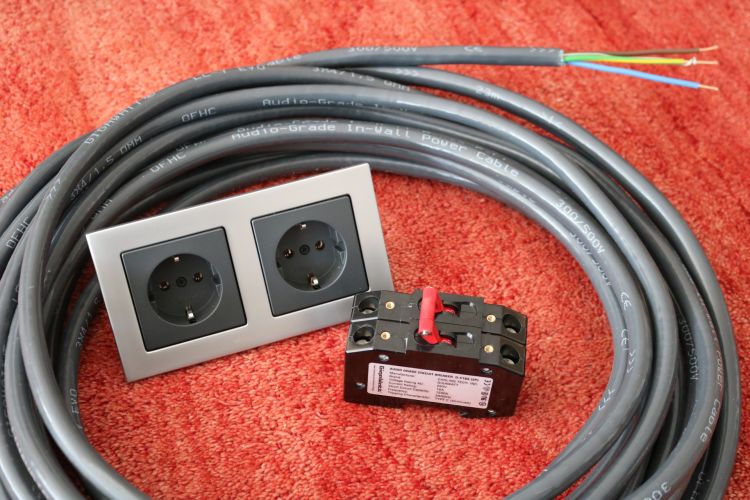
Review samples supplied by Ohm Audio
Retail prices in the Netherlands, including 21% VAT:
GigaWatt LC-Y EVO 3X4 In-Wall Cable: 30 euro per meter
GigaWatt G-C16A 2P Circuit Breaker: 235 euro
GigaWatt G-044 single Schuko Wall Socket: 105 euro
GigaWatt G-044 double Schuko Wall Socket: 174 euro
This review will be in two parts. In the first part, I focus on explaining the products in detail and provide some background information pertaining to some of my personal experiences and in part 2, I will report my listening impressions. If you are in a hurry, you can skip to part 2.
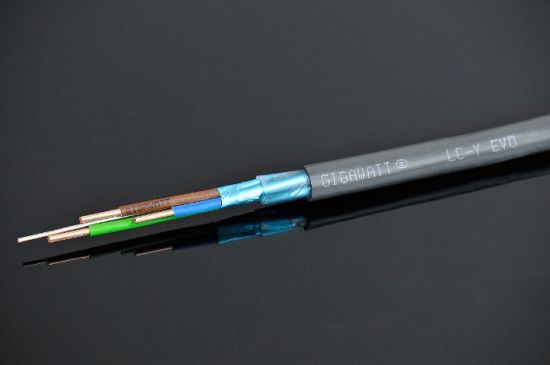
GigaWatt LC-Y EVO 3X4 In-Wall Cable
The LC-Y EVO 3X4 is a proprietary GigaWatt design made up of three solid core 99,997% pure copper (OFHC C10100) conductors with a 4mm2 cross-section each. The conductors are subdued by an annealing process, which allows them to gain a uniform structure and better conductivity.
The conductor insulation material PK90AT28 has a very low dielectric constant. Covering these is another layer of insulation made of a transparent TPV56 polymer with very good damping properties. The twisted wires are protected by a static shield, made from aluminum-polyester foil with an internal, tin-covered copper flow wire. The tight construction of the static shield covers 100% of the surface of the cable, perfectly protecting against all kinds of EMI and RFI external interference. In addition, the shield prevents the receptibility to and spread of internal interferences. The cable is finally covered with a flexible, but very durable protective GA 70AT03 insulating sheath.
The cable is designed to be used in concealed and surface mount installations in dry and wet rooms as well as directly on concrete. The cable is also approved for usage in external installations, under the condition that it will not be exposed to direct sunlight or is placed inside cable channels.
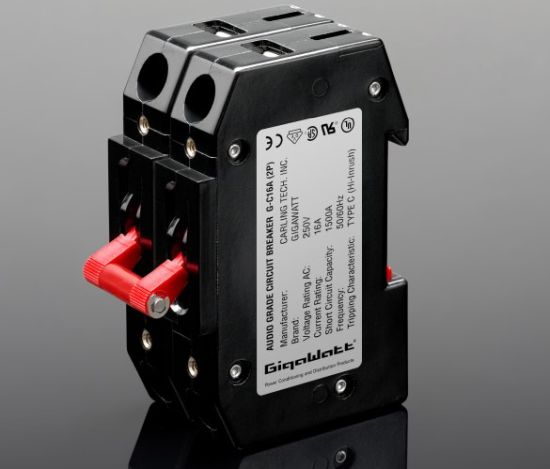
GigaWatt G-C16A 2P Circuit Breaker
The GigaWatt G-C16A 2P is a 2-pole circuit breaker manufactured in the USA by Carling Technologies according to GigaWatt specifications. The 2-P version under review here has contact pins for phase and neutral which are both switched. The circuit breakers are specially designed to handle instantaneous starting current (Hi-Inrush). When a big amplifier is turned on, the in-rush current can be up to 10-20 times higher than the current consumption during normal operation. This high inrush current often causes the contacts in fuses and circuit breakers to burn over time and consequently be damaged.
Gigawatt comments that the fine copper or silver wire inside an old-fashioned melt-wire fuse (“smeltzekering” in Dutch) supposes a resistance to the current flow, which is something that does not happen with the GigaWatt circuit breaker. It is certainly true that this type of fuse always contains a very thin wire, irrespective of the material that it is made of. In addition, such fuses are said to heat up in use which makes them especially sensitive to the aforementioned instantaneous peak current and this can cause the fuse wire to deteriorate over time. Regular automatic circuit breakers, on the other hand, are negatively noted due to their poor contacts which can cause micro arcing.
The casing is made from high rigidity-black phenol-formaldehyde resin, which in the old days was used as the basis for bakelite, to prevent deformation and thus ensure that the contacts remain flat and in perfect contact with each other. The unit is fireproof, melt-proof, antistatic and has a low electric and heat conductivity. The main contact elements are made from silver with a large contact surface. The other supporting conductive components are made from copper and have a large cross-section. The coil itself is made from thick, copper wire, which does not cause any throttling or losses.
How it works
The GigaWatt hydraulic-magnetic switch contains an induction coil that generates a magnetic field proportional to the current flowing through it. After exceeding a certain current value, the magnetic field causes the switch to disconnect precisely at the right time. The coil system contains a core moving in a non-magnetic tube filled with a special, oily fluid with a specific density which allows for precise regulation of the delay characteristic and thus the switching-off process. The switch is designed to ignore swift, peak load changes, which would trigger standard protection, and activates only when safe values are exceeded.
The Circuit Breaker can be mounted on a standard DIN rail, and it can be connected with bare wire or spade connectors.
GigaWatt G-044 Schuko Wall Socket
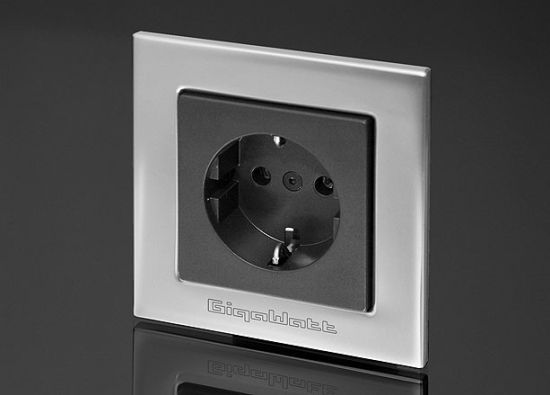
The G-044 Schuko is a high-quality in-wall power socket with an internal chassis made for GigaWatt by German company Merten. The installation wire inlets are silver-plated. The internal contact materials are made from brass and their surface is protected against oxidation (with what seems like a Nickel-plating). A powerful contact and large connection surface with a width of 10mm guarantee a perfect connection with the schuko plug pins. Additionally, the connectors are cryogenically treated and de-magnetized. The faceplate is made from solid, anodized aluminum with a 6mm thickness. The G-044 Schuko socket as pictured above is also available in a dual-version which is the one that I will test here.
Earlier experiences
Before moving on to the listening part, I want to share some of my recent experiments with the power section of my system which will set the stage for what’s to come with the GigaWatt products.
Until recently, the audio equipment in my current apartment was fed from the regular wall socket rather than via a separate audio group. This was done because past experiences in a different apartment some 10 years ago using XMVK 2,5mm solid-core double-isolated outdoor installation cable lead to a sound that I found to be dynamic and powerful and with great solidity but overall too dull and too dark, after which I returned to using the apartment’s standard wiring and basic outlets. While this sacrificed a considerable portion of solidity, at least the sound remained open, communicative and airy.
It wasn’t until now that I gave this a second thought. As part of this GigaWatt review, I have dug up the very same cable as I used back then to give it another run in the context of this review.
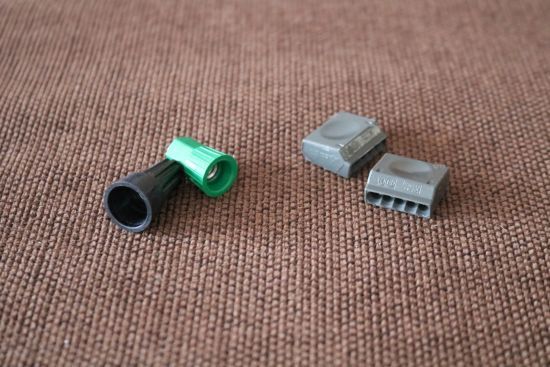
Left: old-fashioned wire nuts, Right: modern snap-in connectors
For Dutch mains installations, the power from the main access point in the utility box is distributed over the apartment via the ceiling and from there wired down to the wall outlets. Additionally, the cables are interrupted in each of the light fixture outlets that the cable passes along the way. After noticing that these connections were all done using modern “snap-in” connectors I decided to replace the ones of the nearest ceiling light fixture point for old-fashioned wire nuts (“lasdoppen” in Dutch).
This made a large difference: more solidity and a more powerful and dynamic sound, more sonorous bass and a less nervous midrange and treble. This was quite surprising given that the cables of this group were still powering pretty much everything else in the apartment, including a mix of several halogen- and LED lights.
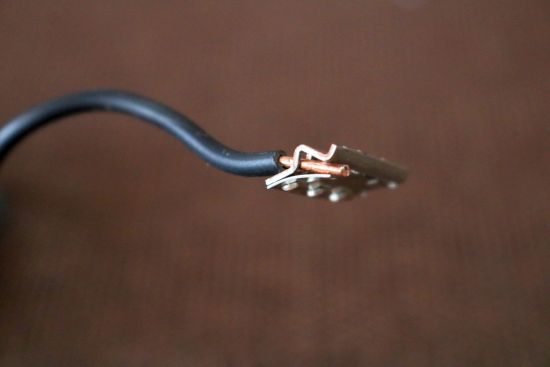
Inside the snap-in connector: notice the small contact area? Additionally, the cable end is clamped to the conductor with only very moderate pressure and it stays in place only because the clamp is made such that it cuts slightly into the copper. This allows the wire to rotate freely but not flip back out.
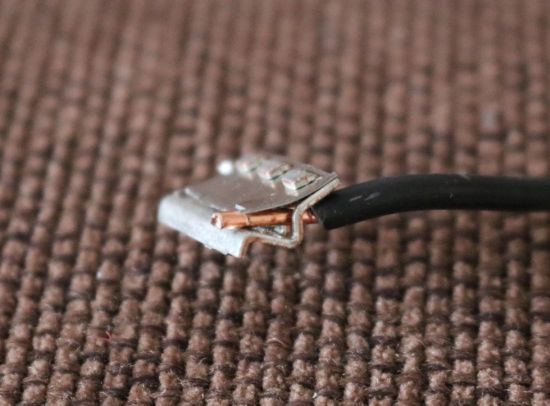
After this unexpected initial success, I proceeded to do the same for every other ceiling light fixture point that was in between the audio system’s outlet and the origin in the utility box. This did lead to further improvements but of decreasing magnitude.
After this, I decided that I should install a separate cable without any interruptions. In order to make this more interesting, I ran a separate and uninterrupted length of the exact same cable type as was inside my ceiling and walls as well as a newly-purchased uninterrupted length of the XMVK double-isolated outdoor installation cable that I used 10 years ago in the previous apartment and did not like at that time. This way, I could check if the differences heard then were due to the separate groups or the cables themselves.
Getting to the point
This finally takes us to the point of this review, the GigaWatt products. As should be very clear by now, bad connections are clearly audible even if they occur many meters away from the system. And given that I have taken it as far as I could using standard materials finally sets the perfect stage for assessing the GigaWatt cable and accessories.

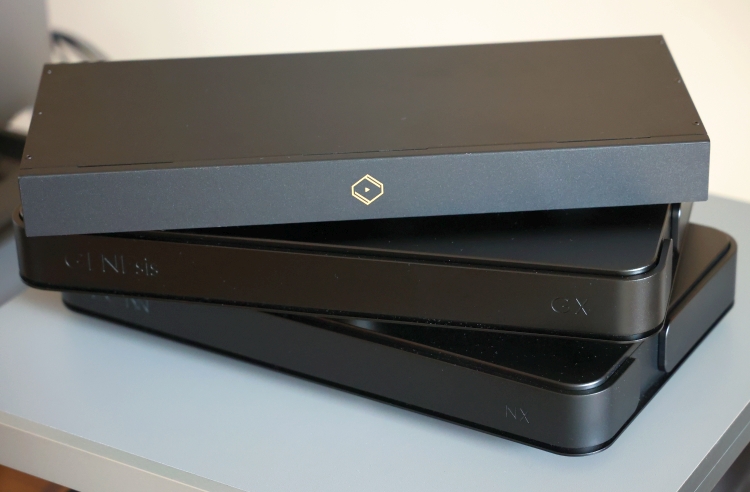
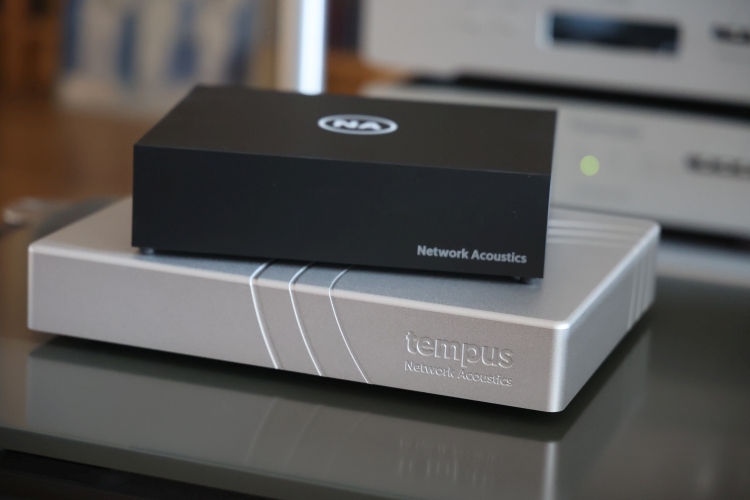

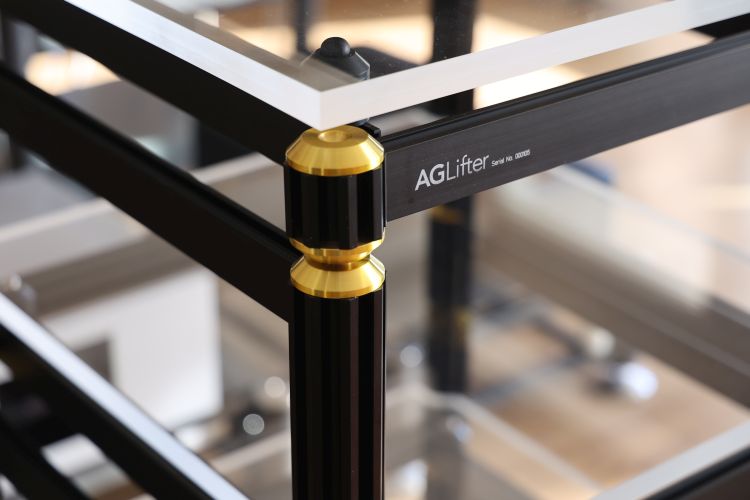
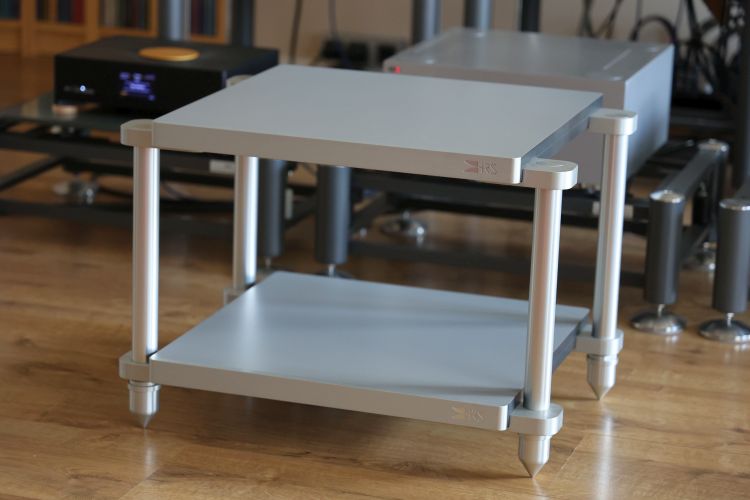
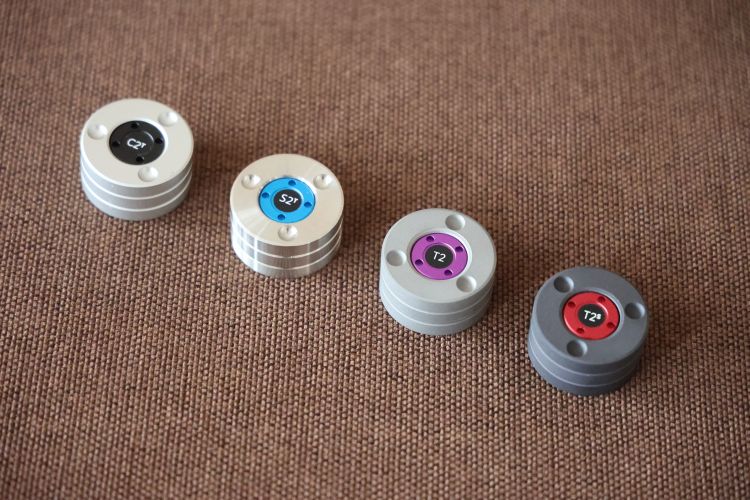
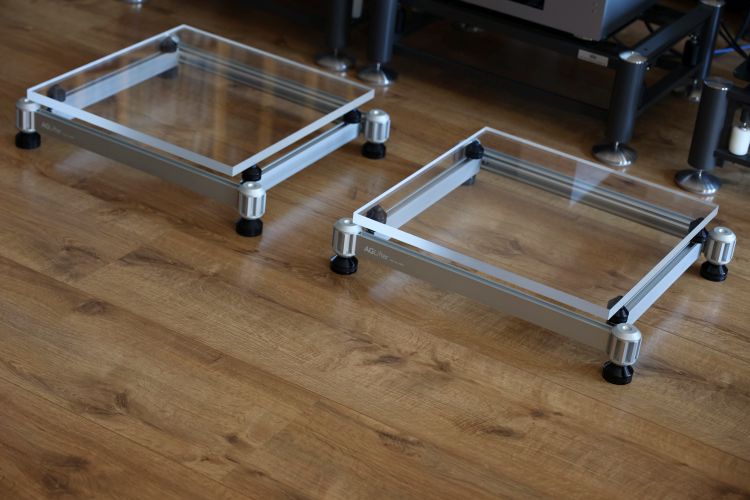
Next step: a test of a GigaWatt power conditioner! 🙂
Indeed:-)
Hi Christian
Is jouw vergelijking met een standaard zekeringhouder? Ik heb zelf de Kemp Ultimates en vroeg me af of de Gigawatts daar een verbetering in brengen
The GigaWatt circuit breaker was compared to the building-standard Hager MKS 516 automatic circuit breaker. This is not a fuse holder but a device that is comparable in operation to the GigaWatt. In regards to the Kemp Ultimates, I think you’d best check with Ronald Kemp but I think that the GigaWatt will indeed be better as it seems to surpass anything that contains a melting wire.
Hi Christian,
Interesting review but I’m a bit lost on how you conducted it also on the differences in buildings and AC in the US and Denmark perhaps. Here in the US the type of rewiring you did would be inside/behind the walls. Was that the case for you and if so how did you manage to change wiring so often I would imagine it’s very labor intensive. Or was this done in your dwelling and not in the walls?
Thanks,
Jon
Hi Jon, I updated the review to make this clearer. The apartment’s standard (interrupted) cabling is inside round PVC cable tubes inside the walls. In some places inside plaster walls, in some cases inside concrete. In the Netherlands, we have no hollow walls in household buildings unless they are really old. The initial replacement wires were installed permanently, where possible inside the plaster walls, where not possible in a cable tray over the concrete walls. The XMVK and GigaWatt were laid out over the floor.
Thanks Christian that makes perfect sense now! And well done review as always.
A great read Christaan!
Thank you for doing all the hard work. In a few days I plan to install one or two separate AC line(s) with standard breaker *. Since you had several cables, I was wondering if you also tried (or maybe not on purpose) to split in two AC lines?
In theory separation of analog and digital (or the amplifier on its own breaker) should be an other advantage. (Maybe one to try for later).
Keep safe and healthy,
Paul
* Are you aware of any comparable breakers in Canada or USA? The code is different here and the choice probably limited. According to code I need to install Arc Fault Breakers.
Hi Paul, sure, in theory that is a sound idea. I’ve used 3 separate spurs a long time ago but these days, with all equipment containing some form of digital processing, network capabilities or switching power supplies, it’s hard to keep it all strictly separate. That said, the ultimate method would be identical runs, one for each component. But one would also need to pay attention to ground planes and other interconnections. Some experimentation will be required.
GigaWatt circuit breakers are built by Carling (USA) which should have outlets over there and may even be able to supply the GigaWatt-specced units. The GigaWatt units are specified for 16A/250V 50/60Hz and they may well be compatible with any other power source that does not supersede these values. But I would definitely double check with GigaWatt on this as I am not a trained electro technician and most of my knowledge in this field is based on European standards.
Update: Arc Fault Breakers are what we in the Netherlands call Aardlek schakelaars. We have these, too, in circuit upstream of (in series and prior to) the GigaWatt “regular” Circuit Breakers. The Arc Fault Breakers detect slow electrical leaks which can occur when wiring is compromised but not completely shorted, which could cause fire. There are high-end models for this in the EU too, for instance by Doepke, but they are very expensive.
Hi Christiaan,
Thank you for the feedback. I enjoy very much reading your audio experiences and many ideas from your cues and test results can be found in my current ”very basic but great enjoyment” set-up. Very inspiring, I really like what you are doing ,please keep up the good work!
Hello Christian,
Do you have some details regarding the universal accessories for on-wall fixation of wall socket ?
Thanks for your help.
Hi Patrick, I used filler rings that are normally used to fit deep sockets into not deep enough wall cavities. The ones I selected are 10 of these moulded together. One is supposed to cut off the required amount but I simply left all 10 of them intact. Then, I attached the sockets using long screws straight into the wall with the filler rings in-between. Alternatively you could also use on-wall fixture boxes but these tend to be bulky and I preferred the cleaner look as achieved with this home-made solution.
Just a question regarding the installation of the 16A circuit breaker, in the picture it looks like it has been installed 180 degrees rotated. I have the 20A version and the connections on the gigawatt circuit breaker are opposite from the “Dutch” fuseholders. When switched on, the lever points down when correctly installed.
(the drawing of the Gigawatt marks the correct side to put the load)
Maybe the 16A is different ?
You are right:-) I observed the instructions on the Gigawatt leaflet but wanted the switch to have the same orientation as my other switches and so I mounted it upside down.
Hi Christiaan,
Thanks for the very interesting review. I also have some experience with using outdoor power wiring compared to default in house wiring. I came to the same conclusions as you. Apart from the extra insolation of outdoor wire it can also be coursed by the fact that the wires are held tight to each other where in house wires have free space between each other inside the tubes (induction or other bad influences).
Kind regards,
Dick
Hi Dick, glad you found it interesting. The space between conductors may certainly also be a factor indeed.
Hi Christiaan,i am using a single 16A Gigawatt circuitbreaker i compared it with direct on the mainswitch just behind the mainfuse and with the gigawatt.There is a difference in sound i found out, did you try that already?
Kind regards,Rik
Hi Rik, I’m sorry but I’m not sure if I am following what you are saying. Are you comparing the GigaWatt output to the direct Main Switch output?
Yes,but i think it is not a common switch but a circuit breaker too it comes after the main fuse?i mounted the gigawatt now direct on the blue and Brown wire of the mainfuse.i just listen to it for 15min ,must say sounds very clear
Hi Christiaan,Just listen direct on the mainfuse strangly it sounds not good i am a bit confused now.So like gigawatt say the gigawatt must be placed after the switch.
Hi Christiaan, Just some info about the switch before my gigawatt,it is a magnetic switch with also a bimetal.Still strange it did not sound good direct on the main fuse but it is possible a burn in problem probably my Cardas cables.
Hi Rik. in audio, “Good Sound” can be a relative term. Technically, the sound with audio components fed straight from the mains fuse/switch should be better than via a successive circuit breaker, no matter the brand or quality. However, I can imagine that you prefer the fuller and more organic sound that the GigaWatt induces over the relatively drier sound direct from the main fuse. In any event, it is not safe to bypass a circuit breaker and I would not advise to do that. The same goes for the Differential Switch (aardlekschakelaar).
Thanks,Christiaan, if i understand it correctly you place your gigawatt behind the differential switch then?it is true that the sound is warmer with the gigawatt must be coilmagnetism then from the gigawatt as well?
Hi Rik, Although some people bypass the Differential Switch (aardlek) for SQ reasons, this is not allowed nor recommended. In any event, the correct order is Main Switch or Main Circuit Breaker –> Differential Switch –> (Audio-)Group Fuse/Circuit Breaker. Just why the GigaWatt sounds warmer I could not tell you. A standard Hager circuit breaker has a similar mechanism with a similar coil but sounds cooler…
Hi Christiaan,the original magnetic main switch(16Asiemens)sounds here also cooler.But the gigawatt connected direct on the main fuse sound stressed a lot.I have now connected my hifi-tuning gold fuse back again after the Siemens switch and sounds more natural softer maybe less dynamic.I want to try the hifi-tuning fuse direct on the main fuse and hear what the difference is,but a bit tricky without disconnecting the main fuse?
Hi Rik, I’m surprised by your comment about the stressed sound. My only explanation would be that it sounds “squarer” and more direct and therefore subjectively “less musical”. However, I am assuming that your HT gold fuse has seen lots of use so the sound of the GigaWatt might become sweeter with prolonged use.
Just connected the hifi-tuning fuse direct on the main fuse? The 0 still connected to the magnetic switch.WOW what a huge difference lot more airy and much less distortion as well!But according to the gigawatt wich sounds bad direct on the main fuse i am wondering if the 16A limit is the issue.
Whatever the cause, I doubt it could be the Amperage rating.
yesterday i connected the zero as well directly on the main fuse sounded fantastic,open big soundstage and clear without any distortion..
Ah, ok. Good to hear.
Hi Christiaan try a 2p meltwire fuse direct on the mainfuse, hifi-tuning is the most affordable there are beter ones but very expensive you be amazed about the sound.I am not happy with the sound of the gigawatt.
Hi Rik, these things remain relative, of course. Just to put this in perspective, in what way do you find the HT to sound better than the GigaWatt?
Direct on the main fuse;sounded harsh and stressed, not good.
After the magnetic circuitbreaker it sounded better it seems to have more dynamics as the HT but the sound is much less natural and causes fatige.HT is much more sophisticated open and deeper imo gigawatt is nothing special(sorry)But after putting the HT direct on the main fuse that was the missing link in my gear.
Thanks for the extra info, Rik. That may well help others with their decision making.
To comply the VDE regulations our breaker is tested to IEC EN 60934 VDE 0642 (circuit for equipment for household).
An additional backup fuse isn’t obligatory if you will use this breaker to protect a single dedicated power line. Anyway most of household installation include main protection (20-32A) in front of our G-16A breaker and then declared Short Circuit Capacity (Icn) is 5000 A (instead of nominal 1500A).
Hi Christiaan,
This wrote Gigawatt to me,
Regards,Rik
Hi Rik, it’s interesting that the person at GigaWatt is talking about a backup fuse. Maybe something got lost in the translation? I’m no licensed technician and won’t pretend to know better than the people at GigaWatt but I’m quite certain that a Differential Switch (aardlek schakelaar) is obligatory between the main fuse/switch and the group fuse/switch.
Your might be right,but there is to much difference not bypass this differential switch but also the main (Magnetic)switch gives so much distortion and dull sound.But Kemp who is a technician who gives also the advice to place a 2p fuse direct after the mainfuse.
Yeah, that’s the problem. Once you heard the difference, it is difficult to go back:-) Ronald Kemp is well-experienced and a licensed technician but he is also an audiophile. He will likely have provided this advice based on audiophile grounds. In any event, the risk is very small and it’s entirely up to you if you are willing to accept that risk. As a reviewer who swaps devices on a daily basis, sometimes connecting early samples and prototypes, I prefer to be on the safe side.
Haha yes i understand that.Keep up the good wrok Christiaan!
Hi Christiaan some important info again, Antoine of Peacockaudio said the same things about the gigawatt,but he also said that it takes 800-1000hours of burning in. And are after that better than all other fuses! I just returned mine to Kemp with 30euro loss because of the screws were used.?
Indeed, I’ve been told that, too. And while there is indeed a development in the Circuit Breaker’s sound, I would not classify the difference as very large or, indeed, make-or-break.
As a Swiss engineer once told me, after 1000hours burning in you are burned in ?
FYI, at Action you can by a buildin wall socket in which the conductors are mounted with screws. The build construction looks good and the contact area looks te be sufficient. Particularly if you consider the costs.
What happened to part 2 of the review? I get a 404 error.
I changed from separate parts to using pagination (the arrows at the bottom of the article) to divide articles and this link was still using the now non-existing second part. It’s corrected now, thanks for the hint!
Thank you!
Christiaan, thank you for your thorough review. I ordered the GC 16 A with the Gabriel gdl 90 chip. Did you review this combination? I experienced immediately a kind of rest in the sound. I address that to the Gabriel chip. But I ‘m doubting if it could also impart the openness of the sound. Do you have a same experience ? Or didn’t you also use the Gabriel chip for that reason? Problem is I don’t think I can detach the chip for comparison without destroying it.
Hi Mark, Alas, I have no experience with that chip. I suppose that the Gabriel chip will be as with any tuning: it can have positive as well as negative effects.
I Mark,It is a while ago but i also tried out the gabriel chip.And i sent of back ,it was not a succes in my system,it is to long ago but i remembered the same problem.
Thank you, Christiaan for your very insightful and helpful reviews on this site!
In this review you mention that the GigaWatt LC-Y EVO cable could be somewhat too much in terms of warmth/fullness added depending on the other components in the set.
My question: do you think this still holds when all components in the set are powered through a power plant? My high-end audio set is powered with power regenerated with the PS Audio P15 power plant, I am interested in powering the P15 via this GigaWatt cable.
Hi Herman, the only PS power plant I heard was the PPP. It made the sound a lot tighter and articulate and more dynamic but with a lot of control, too much for my taste at that time. If the newer and bigger power plant has a similar effect then the Gigawatt cable might work very well indeed. One of the PS Audio Power Plant’s main establishments is that it lowers the output impedance which will I suspect will also reduce the amount of warmth that a cable adds.
Hi Christiaan,
I’m thinking to buy the Gigawatt 3x4mm to replace my Hifituning cryo cable. Unfortunately my Oyaide (palladium gold, like 046) can handle 2.6mm.
Unfortunately there is not so much choice in EU wallsockets. Have you heard the Furutech wall socket with ncf face plate? I know you didn’t compare them directly, but maybe you have listened to it in a other setup?
Ps: I’m afraid the Furutech house sound will take over. I don’t like the artificial detail some Furutech cables add. Therefore I Like Oyaide and Wattgate plugs, were music sounds more authentic.
I have not heard the G-044, but I had a Gigawatt circuit breaker and zgigawatt PF2 mk2 powerfilter at a time where I had a beginners setup and found the sound to grey and mechanical. My setup has greatly improved and there is a chance Gigawatt will sound just right/ neutral instead of grey/ mechanical. Still I’m curious about your findings!
I could also rejuvenate the contact points at the point of connection to the wall box. But I’m afraid the contact surface would then be less even and in the end the sound quality gets worse..
Hi Nick,
Alas, I have not heard the Furutech NCF Wall Socket. But having used the Furutech Nanoflux speaker cables and power cables, and knowing Furutech products in general, I think I can safely say that the character of the outlet will lean toward the fluid and refined side, just as you may already assume. Indeed, if you’re worried about the Furu house sound then I would be careful not to use too many of their products. Then again, I can understand your fear of getting an overly bland sound. But if you think the GigaWatt circuit breaker sounds grey or mechanical, then I suspect you are accustomed to a smoother and fuller sound than I have come to find ideal in recent years. For me, the Gigawatt circuit breaker sounds quite smooth and rich, so much so that I changed it to the Siemens Sitor, which I think will sound too lean for your taste or system. For me, the Gigawatt outlets are perfectly neutral but you may find them to be too “normal”.
Still, my personal belief is that one should not color or enrich the sound on the power side but deliver the power as unaltered as possible and choose the components to work synergistically. Then one can add any enrichment or smoothness, if desired, with line-level cables, speaker cables, component setup and other tweaks. Once you have taken away some energy/excitement/dynamics/egde (name it however you will), on the power delivery side it is very hard to get back downstream.
Hi there Christian my name is Myra
I am living in Canada near Vancouver originally from Britain
Where would I buy the gigawatt equipment
I have installed 2 dedicated circuits with hospital grade plugs which have a built in surge protector.
I am streaming music from the naim uniti nova
I have DH labs speaker cables, power cord and Ethernet cable
Gaia speaker feet
Upgraded the internet to fibre optic with a new router
I want to make a better quality electrical cable for the router
Buy an Ethernet switch
Some people say it’s better to buy a router that is more designed for music although the local internet provider does not support that box.
How would you advise me
Thank you for your time
Myra
Hi Myra, please look here for the distributors. There is a major debate going on about ethernet switches. I prefer to refrain from adding any recommendations on the matter but will say that, while there are certainly meaningful differences among switches, it is also highly relative. Fiber Optics are a great way to further increase galvanic isolation (it’s already built into the basic Ethernet spec) but even then, the switch at the endpoint will still matter.
The best advice that I can give is to be aware of what it is that you seek in terms of SQ, then compare two or more products and make up your own mind. It also pays off to compare a couple of power supplies for the switch or router.
Hello Stephaan, how are you?
I am coming back to you for advice!
As I told you previously, I installed a dedicated mains line and an electrical panel for my hifi and home cinema system, which starts from the general meter! In this specific electrical panel, I have a Doepke DFS2 differential circuit breaker and a Gigawatt G-C16A circuit breaker.
Do you think that you can install several wall sockets (Gigawatt G-044 for example) from the Gigawatt circuit breaker, using as you did, rigid single wire 2.5 mm?
On the other hand, do you think the Gigawatt G-040 socket (which requires making a hardwood box!) Can be a good cheaper alternative to the G-044?
Thank you for your help and valuable advice!
Take care of yourself !
Best Regards
Pascal
Hi Pascal, running a couple of outlets from a single lead should not be a problem. After all, you’re doing the same when using a power distribution block. Ideally, they’d be connected from the same central point branching off your new main lead. I’ve not heard the Gigawatt G-040 sockets so, alas, I can’t tell you if and how they differ sonically from the 044’s.
Hi Christiaan ,
Excuse me for having given the wrong name!
Do you think the jackets and insulation of the Gigawatt cable is responsible for how you feel when listening to the 2.5mm solid core cable? I think about it, what if we removed all the insulation or sheaths of the Gigawatt cable (except the insulation of the conductors of course!) To make it like 2.5mm solid core cables, unlike the Gigawatt cable. 4 mm conductors! what do you think about Christiaan ?
Best Regards
Pascal
Hi Pascal, no worries:-) Indeed, I think that the insulation has a lot to do with this. Removing the outer insulation might indeed make a very noticeable difference. You could try it first with a 2-meter piece. Do let me know the results! Just note that it will officially be mandatory to use these wires inside a cable tray after that.
Hi Christiaan,
Thank you for your comment – not long afterward I ordered the three Gigawatt items of this review plus the Doepke DFS 2 F Audio circuit breaker which you also reviewed. I am very happy with the substantial improvement in sound that resulted. With respect to my question on warmth/fullness added – I am happy that no warmth was added through this change. Probably a small amount of fullness was added, which I was not looking for but which turns out to be welcome.
By the way, the PPP you mentioned is now a relatively old model power plant (several generations back) – I would characterize the effect on sound from my current-generation P15 more as follows: the sound is more
Thanks for the feedback Herman! PS, it looks like a bit of text fell off at the end of your comment.
Clearly, Dutch wiring codes and standards leave much to be desired. Maybe I missed it, but did anyone ever address exactly WHY changing to wire nuts made the difference? Minimal contact area is only the beginning of what’s occurring; A-spots, burnish-wear, particle buildup, increased resistance, increased heat, further loss of contacting surface. Those ‘clip’ connectors serve one purpose: reducing contractor labor costs. That’s it. They are fire and safety hazards. Wire nuts, screw nuts, screw blocks, terminal blocks, or any method of firmly compressing wires together (to maximize surface contact) while preventing movement of the contact surfaces under stress are all excellent ways to connect wires safely, securely, and with maximum transfer efficiency. Or, you could just get a smaller amp.
Christiaan, what was the reason for changing from gigawatt gc 16a to the Siemens fuseholder in March 2022 ?
Hi Mark, My change from the Gigawatt switch for the Siemens Sitor followed a series of subtle and less subtle changes to my room and system in order to further enhance the system’s neutrality, linearity, transient behavior, dynamics, and expression.
In short, when I first added the Gigawatt, I needed and wanted the warmth and fullness that it provided, especially its fuller bass, as my room was eating a lot of the bass due to cancellations. See also the Latest installment of the HFA history where this is further explained).
When those issues were addressed acoustically, and my bass became much fuller, I found myself wanting a leaner, tighter, and faster sound. When a good friend and colleague reviewer mentioned that he used Siemens Sitor which he felt was the most neutral switch he had used, I followed up and got myself one which I had installed in parallel to the Gigawatt. Over a couple of months, I switched back and forth and decided that the Siemens was the better one for my new situation. Oh, I use the standard fuse as the friend indicated that the more upscale models add warmth which I do not need.
Hi CHRISTIAAN. Thanks for review. Can You specify what exactly model Siemens Sitor did You use ?
AFAIK, there is only one Siemens Sitor Cylindric Fuse Cartridge. The differences are in the fuses. I use the standard silver-plated one with a solid silver rod for neutral.
Very nice blog, where we can follow development on this theme. How did you connect the auxiliary bare wire on the Gigawatt distribution cable?
The drain wire was connected to the earth at the source end (Gigawatt switch) and left unconnected at the destination end (Gigawatt wall outlet).
Hi Critsian. Thank You for this infotmative review. I have also gigawatt g-16a and i notice that he can be too rich in sound compare to standart. Can You specify exactly the model of Siemens Sitor ? Thanks
Christiaan,
Ik heb een vraagje over de Gigawatt zekeringhouder. Ik heb hem zelf ook en vind dat hij veel rust geeft in het geluid, met behoud van transparantie in het hoog. Ik heb echter twijfels over transparantie en definitie in het laag. Omdat ik toen ik hem installeerde versleten elcos had, kon ik de verbetering niet goed analyseren. Nu mijn nieuwe elcos ingespeeld zijn heb ik dus twijfels over de laag definitie. Jij gaf aan dat je de bas iets teveel van het goede vond met de huidige plaatsing van je speakers. Maar hoe ervaarde je de laag definitie? Het kan ook zijn dat ik het ergens anders in moet zoeken, zo’n meterkast zekering swap ik qua werkzaamheden, niet even voor de lol.
Alvast bedankt voor je antwoord.
Met vriendelijke groet, Mark
Hi Mark, like you, I prefer the bass to be articulate and precise. So, I understand your doubts and can confirm that I heard the same on my end. Whilst the GigaWatt Circuit Breaker provided a beautifully rich sound with a very wide soundstage, ultimately, I wasn’t happy with the bass. I decided to have a Siemens Sitor circuit breaker placed next to it, such that I can switch between the two. In comparison, the Siemens provides almost the inverse sonic signature: lean, tight, articulate, and highly focused, if not as wide-imaging, and comparatively dry and clean-cut. I will admit that I have had to get used to the no-frills direct sound of the Siemens switch, but in the end, after having switched back and forth a couple of times, for my taste and system, it works well.
Hello Christiaan,
I too would like to test the Siemens Sitor circuit breaker, instead of my Gigawatt, can you give me a purchase link for the exact model you are using please ?
Thank you very much in advance !
It’s called “Siemens Sitor Cylindric Fuse Cartridge”. I used it with the standard fuse for hot and a silver-plated rod for neutral.
Christiaan, I was doubtingabout purchasing the Gigawatt 044 outlet, but decided to buy the Schnerzinger wall outlet. I did not compare them, but must say I am very pleased with the reduction of smear, increase in detail without increase of
grain and better dynamics as well. Would it be an idea for you to test the Gigawatt 044 side by side with the Schnerzinger? I think the performance would fit your preferences.
Hi Mark, it’s a nice suggestion and I’ll keep it in mind.
Good evening, I’m using Lapp Kabel Olflex 110CY 3×2.5mm line from the electrical panel. At one point I used Inakustik AC2502m, but it was very strict, direct and dry, so I went back to olflex, This was richer and softer, and I like it, GigaWatt LC-Y EVO compared to olflex how does it sound??Is it softer and smoother?thanks
It’s been some time since I heard any Lapp cable but I would say the Gigawatt LC-Y EVO is smooth but more solid and articulate than Lapp, certainly not smoother than Lapp. Please note that LC-Y is very stiff and only intended for in-wall use or as a main cable that is not moved after installation. It’s not ideal for making separate power leads.
@Kostas I find the Gigawatt somewhat grey/ neutral and not rich if that is what you looking for. Furutech is rich and smooth.
Yes, I will agree, because I also have a furutech. Of course, the cost for multiple meters as a separate line is high, thank you very much to all of you, I should also point out that I have a Hifi tuning fuse in the electrical panel and a Gigawatt socket
Hi Christiaan,
Did you besides circuit brakers also compare “aardlek” switches or is there a certain type that you are using?
So far, I haven’t had a desire to go there:-)